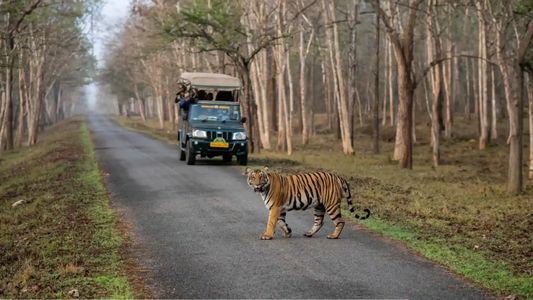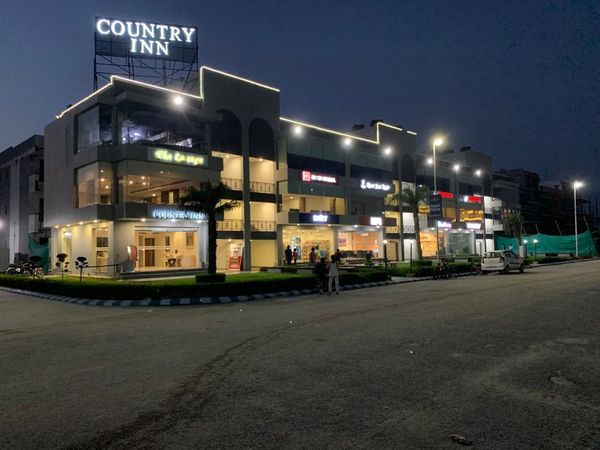Into the Wild: Discover the Untamed Beauty of Kabini National Park
 Palakshi Meharwal
17 May, 2025
9 mins read
40
Palakshi Meharwal
17 May, 2025
9 mins read
40

Nestled at the confluence of the Kabini River and the vast Nagarhole Forest, Kabini National Park in Karnataka is a jewel of South India’s wildlife tourism. Once a private hunting reserve of the Mysore Maharajas, Kabini has gracefully transformed into one of the most sought-after ecological sanctuaries, offering an authentic wilderness experience steeped in both biodiversity and mystique.
This protected area is more than just a forest—it is a living, breathing organism, pulsating with the rhythm of elephants' footsteps, the elusive rustle of leopards in the underbrush, and the harmonious calls of hundreds of bird species. Whether you're a seasoned naturalist or an inquisitive traveler, Kabini beckons you into its lush green embrace.
The Geography and Ecosystem
Spanning over 55 acres, Kabini National Park is part of the larger Nilgiri Biosphere Reserve. It lies along the banks of the Kabini River, which not only gives the park its name but also serves as a vital water source that sustains its diverse flora and fauna.
What makes Kabini’s landscape unique is its hybrid of dense deciduous forests, open grasslands, and freshwater habitats. During the dry months, the receding waters of the Kabini reservoir expose rich meadows that become grazing grounds for herbivores. In contrast, the monsoon transforms the region into a lush tapestry of green, enhancing its photogenic beauty.
Wildlife Encounters: A Symphony of Species
Kabini is a haven for wildlife enthusiasts, offering opportunities to witness some of India’s most iconic species in their natural habitat. The park is particularly famed for its high density of Asian elephants. Observing a herd drinking, playing, or simply marching through the underbrush is an unforgettable sight.
Tigers also roam these woods, though they are more elusive. Patience and luck play a significant role in a successful sighting. The real star of Kabini, however, is the melanistic leopard—popularly referred to as the black panther. This rare and stunningly beautiful predator has been spotted more frequently here than in any other part of India, drawing photographers and wildlife aficionados from around the world.
Other commonly sighted mammals include Indian gaurs, wild boars, spotted deer, sloth bears, and sambar deer. Bird watchers, too, find plenty to marvel at, with over 250 species reported in the region, from the vibrantly colored Malabar trogon to the majestic crested serpent eagle.
Safari Experience: How to Explore
Visitors can explore Kabini through two primary types of safaris—jeep safaris and boat safaris—both organized by the Karnataka Forest Department and private eco-resorts. Each mode of exploration offers its own unique perspective of the wilderness.
Jeep safaris provide a ground-level view, allowing visitors to track pugmarks and follow trails that lead into the heart of predator territory. Boat safaris, on the other hand, glide along the Kabini River, revealing scenes of elephants bathing, marsh crocodiles sunning themselves on the banks, and flocks of migratory birds creating ripples in the quietude.
It’s advisable to book your safaris in advance, especially during the peak wildlife-viewing months from October to May.
Sustainable Tourism: Balancing Luxury with Responsibility
A key feature that sets Kabini apart from other wildlife destinations is its commitment to responsible tourism. Most resorts here operate with sustainability in mind, blending modern comfort with eco-conscious practices. These establishments often employ locals, source ingredients for meals from nearby farms, and engage guests in educational programs about conservation.
In addition, visitor access to the forest is strictly regulated, with limited safari vehicles allowed per day to minimize human impact on wildlife behavior. This ensures that Kabini remains a sanctuary for animals and a soulful retreat for travelers seeking genuine connection with nature.
Best Time to Visit
While Kabini is open throughout the year, the dry season between October and May is considered the best time for wildlife sightings. During these months, animals gather around water sources, increasing the chances of spotting predators and large herds.
The monsoon season, from June to September, has its own charm. The rains breathe life into the landscape, making it a lush paradise ideal for photography, though some safari routes may be inaccessible due to flooding.
How to Get There
Kabini is well-connected to major cities in South India. The closest airport is in Mysore, roughly 80 kilometers away, while the nearest railway station is also in Mysore. From there, a drive through winding forest roads brings you to this serene destination. For those coming from Bengaluru, the 220-kilometer road trip takes approximately five hours, making Kabini a popular weekend getaway.
Where to Stay
Accommodation options in Kabini range from luxury eco-lodges to budget-friendly forest guest houses. Some well-regarded names include:
- Evolve Back Kuruba Safari Lodge: Known for its heritage-inspired architecture and excellent naturalists.
- The Bison Resort: A unique mix of tented camps and rustic charm with views of the Kabini backwaters.
- Jungle Lodges and Resorts: Run by the state tourism department, offering clean rooms and professional safari experiences.
Tips for a Responsible Visit
To ensure your trip contributes positively to the ecosystem, consider the following:
- Refrain from playing loud music or littering in forest areas.
- Stick to designated safari trails and follow the naturalist's instructions.
- Avoid using flash photography when capturing wildlife.
- Support local communities by purchasing handmade souvenirs or participating in village tours.
Conclusion: A Call to the Wild
Kabini National Park is more than a destination—it’s an experience that reconnects us with the primal beauty of nature. It invites us to step off the treadmill of modern life and immerse ourselves in the quiet drama of the wild. Whether you come for the thrill of a tiger sighting or the peace of watching elephants at dusk, Kabini promises a transformative journey that stays with you long after you leave.
As more travelers seek meaning in their adventures, Kabini stands out not just for its wildlife but for its soul. It’s not just about seeing the wild—it’s about feeling it.
Written By:
Palakshi Meharwal



Hotels at your convenience
Now choose your stay according to your preference. From finding a place for your dream destination or a mere weekend getaway to business accommodations or brief stay, we have got you covered. Explore hotels as per your mood.


